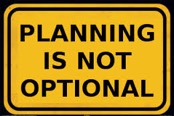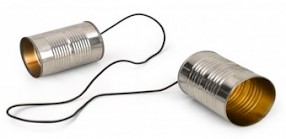- Stories from the Road- Meet Maverick Driver, Kenny Neely
- Fuel up and GO: Healthy and QUICK Recipe & Activity Ideas for the Professional Truck Driver
- The Juggling Act: Stories from the Road- How to successfully balance a professional truck driving career and your family.
- Maverick: At the Forefront of Technology
- Stories from the Road: A Journey
- A Closer Look at How Maverick Gives Back
- Exploring the Advanced Interior of Maverick’s State-of-the-Art Trucks
- 2023 Maverick Driver Appreciation Week
- 2023 National Truck Driver Appreciation Week Food Schedule
- Get to Know Maverick
- Flatbed Trucking Tips and Tricks
- Tips for Staying Hydrated and Safe in the Summer Heat
- Summer Road Trip Essentials
- 2023 Maverick Employee Appreciation Week Food Schedule
- How to Succeed as a Professional Driver
- MAVERICK TRANSPORTATION CELEBRATES FIVE VETERAN TRUCKS TO BEGIN 2023
- 2022 Maverick Employee Appreciation Week Food Schedule
- 2020 Driver of the Year Recap
- 2020 Special Olympic Truck Convoy
- 2019 Driver of the Year Recap
- Maverick Transportation Celebrates 40 Years in Business
- 2019 Driver Appreciation Week Schedule
- 2019 ARKANSAS TRUCKING CHAMPIONSHIP
- 2019 Employee Appreciation Week Schedule
- 2018 Driver of the Year Event Recap
- 2018 Driver Appreciation Week Schedule
- 2017 Driver of the Year Event Recap
- MAVERICK TRANSPORTATION ANNOUNCES LARGE PAY INCREASE
- Maverick Driver Ron Kneeland III Named 2017 Hero of the Highway
- Aces & Freights - 2017 Q3
- Aces & Freights - 2017 Q2
- New Dedicated Driver of the Quarter/Year Program
- DOCUMENTARY FILM “BE PREPARED TO STOP” SHOWS IMPACT OF FAILING U.S. INFRASTRUCTURE ON LIVES OF AMERICANS AND ECONOMY
- Statement on Automated Vehicle Technologies
- Aces & Freights
- 2016 Driver of the Year Event Recap
- Maverick Announces 401k Match for All Maverick Employees
- Be Prepared to Stop
- Advice for the Rookie Maverick Driver – Pt. II
- Advice for the Rookie Maverick Driver – Pt. I
- 2015 Driver of the Year Event Recap
Posts
Aces & Freights - 2017 Q2
Tuesday, June 13, 2017

Welcome to our latest edition of Aces & Freights – our newsletter written/edited by Operations Analyst and former driver Ken Moore regarding the trucking lifestyle. Questions or comments? We’d love to hear from you. Please don’t hesitate to contact Ken at kmoore@maverickusa.com. We hope you enjoy the content and we look forward to your comments, suggestions, and any stories you may have to share, too!
Financially Healthy Life Edition
Most of us drive to earn money to support ourselves and our families. We’re out on the road to make sure there’s a roof over our heads and food in the refrigerator when we get there. I’ve honestly only met two people who drove that did not do so to support themselves, but did it for the sole enjoyment and education of driving and experiencing the wondrous sights this country has to offer. The rest of us get to do that as well, but the paycheck that accompanies it is a big deal, too. This edition of A&F is about making money as a driver and how best to do that at Maverick.
The Basics

It may seem strange, but I’ve learned more about managing a truck and its business since coming off the road than I did while driving. A good bit of it is because I now have the ability to talk to our best drivers to see what they do. Amazingly, even after more than 5 years with Maverick (evenly split between driving and not driving) and three and a half years driving elsewhere, I’m still learning the tricks of the trade on how to make better money as a driver.
The best drivers do three things well. They plan well. They communicate well. They make friends well.
“Planning is everything.” How many times have you heard that? Well, it’s not. (I did just list two other things above, right?) I will say, however, that it’s not far off. In training, we teach you the basics of planning out your day. Estimate 50 miles/hour driving, include time for your 30 minute break, 10 hour break, load checks, lunch, add a “cushion” in case something like a traffic jam happens and where you will likely park. We don’t get into much more than that during training time because you have to have the basics down in order to do this job. Also, there’s so much in this early stage to remember and so much going on already it’s overwhelming. I know because I’ve been there.
One of the biggest issues in planning is parking. As many of you already know, parking is becoming more and more of a hassle. It’s said that the average driver spends about 45 minutes looking for parking every day. This is more or less true depending on where in the country you are and what time you’re there. You could save yourself a lot of time by starting your day earlier and finishing earlier, though this doesn’t always work with the ever-changing schedule drivers are subjected to. When you plan for parking, figure out several places along the route you’ll be on where you might be able to park. Find a best case scenario for if you have a clear, easy day of driving, a worst case scenario in case you don’t, and a location or two between. You can check how much parking is at each location using the Trucker Path app and even check the parking history of each location to gauge if there’s likely to be parking at that location at the time you’d probably get there. If your choice will not likely have parking available when you get there, you’ll save time by choosing somewhere else. As a general rule of thumb, however, parking in the Northeast and in cities is harder to come by and fills up earlier. In the West and Midwest there are a lot of really large truck stops and it’s easier to get parking later.
I would do a lot of this planning while waiting to get loaded or unloaded. Even if I don’t know where I’m going after I unload, I would pick two possible directions and then mark different spots on the map where I could park depending on when I might finish loading. For example, say it’s noon and I know my clock runs out at 5pm. If the soonest time I estimate being loaded, tarped, and secured is at 2pm, I have about a 150 mile radius to plan out (3 hours left at 50 miles per hour). Once I figured this for 2 possible routes that I might be on, I would then do the same calculations but estimating only two hours left to drive. This way, with a couple possibilities “preplanned”, I can leave a little sooner, park a little sooner, and start up a little sooner the next day. Every little bit helps. I’ve arrived at the end of a work day on a Friday at a receiver before though the load wasn’t due until Monday due to these techniques. I was then able to get another load that delivered Monday, meaning I made several hundred dollars more than I would have had I not figured out how to save 15 minutes here and there.
Communication is huge. Don’t be afraid to ask your FM if he/she knows where you may be going when you’re done unloading. Even though you may not have a preplan sent to you, it’s possible that there’s a “soft” plan (a work assignment that isn’t set in stone and depends on when you finish) set on you. If there is a soft plan on you then it can make your planning a little easier.

Communication is a big deal! Macro 4’s! Send in your ETA after you plan your trip and then update your FM’s with a new ETA anytime something changes, for good or bad. If you arrive 4 hours earlier than your ETA, you’ve told logistics to expect you there at a different, much later time, so their plan for you revolves around that later time. Updating your arrival time frequently, and I’ve done the math, can improve how much an average driver makes by $3,500 per year. Seriously. That doesn’t even include the uptick you’ll receive in PFP bonuses associated with a higher MPD. As your communication improves, that number will continue to climb.

Make Friends with the customers, especially at the locations you go to frequently. Shippers and receivers will prioritize the people they like. It’s human nature, so unless there’s a strict appointment time, there’s a good chance your friends will get you in and out as fast as they can, which can potentially save you hours almost every time you’re there. Macro 4’s! Send in your ETA after you plan your trip and then update your FM’s with a new ETA anytime something changes, for good or bad. If you arrive 4 hours earlier than your ETA, you’ve told logistics to expect you there at a different, much later time, so their plan for you revolves around that later time. Updating your arrival time frequently, and I’ve done the math, can improve how much an average driver makes by $3,500 per year. Seriously. That doesn’t even include the uptick you’ll receive in PFP bonuses associated with a higher MPD. As your communication improves, that number will continue to climb.
I’ve noticed fairly often that when shippers or receivers don’t speak very much English, that drivers who don’t speak their language have a tough time relating and therefore don’t try to get along with them. Instead, download Duolingo, an easy to use foreign language teaching app, and learn a few phrases. Just the attempt, most times, is enough to get you on their good sides and you’ll be brought in ahead of a driver standing next to you who didn’t try. I’ve done it more times than you’d imagine in both Spanish and French.
Planning, Communicating, and Befriending will all go far into putting more of your available hours behind the wheel. If you’re busy looking for parking, waiting on a load when you may not have needed to, and sitting watching other drivers get loaded and unloaded before you, you’re not earning as much as you could. A little effort in these areas could raise your pay the equivalent of about six paychecks per year!
Rock Your PFP
 Maverick’s Pay for Performance program is built to reward drivers for making the extra effort, for being safe, for taking care of the truck, for being available, and for doing things the Maverick Way. Compared to any of the other performance incentive pay systems out there that I’ve seen, Maverick’s PFP pays out the most and is also the most forgiving for drivers who are doing well in most categories but not all. Many companies, for example, give out a fuel bonus. This is something Maverick did as well before going to PFP. The fuel bonus system motivates a small number of people to improve, usually those who are already doing well in that category. Because PFP is based on a concept of rewarding drivers for being the “whole package”, or well-rounded in other words, it encourages drivers to improve in all areas. Improving in all areas allows Maverick to make the pay for PFP greater than just the pay a fuel bonus could offer. This article will show you how to pop your PFP score up off the charts and improve your pay as a result.
Maverick’s Pay for Performance program is built to reward drivers for making the extra effort, for being safe, for taking care of the truck, for being available, and for doing things the Maverick Way. Compared to any of the other performance incentive pay systems out there that I’ve seen, Maverick’s PFP pays out the most and is also the most forgiving for drivers who are doing well in most categories but not all. Many companies, for example, give out a fuel bonus. This is something Maverick did as well before going to PFP. The fuel bonus system motivates a small number of people to improve, usually those who are already doing well in that category. Because PFP is based on a concept of rewarding drivers for being the “whole package”, or well-rounded in other words, it encourages drivers to improve in all areas. Improving in all areas allows Maverick to make the pay for PFP greater than just the pay a fuel bonus could offer. This article will show you how to pop your PFP score up off the charts and improve your pay as a result.
The first thing you should realize is that Maverick wants you to succeed. Its business model is based on its drivers’ successes, not their failures. It has to be a win-win for both company and driver for Maverick to thrive. That probably sounds like propaganda, but here’s how I know it’s not a bunch of bologna. First, about 80% of our fleet gets PFP to some degree each quarter. Second, Maverick is constantly working on showing drivers how to improve their fuel mileage and trip planning, two of the biggest categories for PFP. And third, there are bonus points built into the PFP calculations. If you take advantage of them, you can send your score off the charts. Check out the Operations Newsletter with the PFP Ranks for the top drivers. 517 drivers received the highest payout. That’s about 40% of the drivers eligible for PFP, which is about half of the total number of drivers getting PFP, getting top pay. Also, if you notice on the Operations Newsletter, the top driver scored 141 points…out of a 100 point system. What does that tell you? That the PFP model and all of the extra points built into it is made for drivers to succeed.
Now that we know this, how do we take advantage of it? We start by understanding how each category is calculated and move on from there.
MPD—Miles per day takes the average number of miles you run in per week and divides that number by 5 work days. There are bonus points worked into this calculation which rewards drivers who drive for more than 5 days per week. Quite a few Glass and TCD drivers are found toward the very top of the PFP scores because they are out, on average, three weeks at a time. That means that they are getting four extra drive days every three weeks which boosts up their MPD.
 MPG—Miles per gallon is calculated by taking the total Hub miles from the truck during the
MPG—Miles per gallon is calculated by taking the total Hub miles from the truck during the

